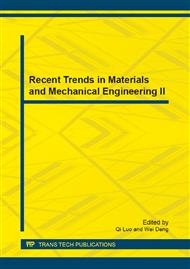p.92
p.99
p.107
p.114
p.118
p.123
p.129
p.134
p.139
Influence of Various Nanofluid Types on Wavy Microchannels Heat Sink Cooling Performance
Abstract:
This paper discusses the impact of using various types of nanofluids and nanoparticle volume fractions on heat transfer and fluid flow characteristics in a wavy microchannel heat sink (WMCHS) with rectangular cross-section. Numerical investigations using three different types of nanofluids including Al2O3-H2O, CuO-H2O, and diamond-H2O with a fixed nanoparticle volume fraction of 3% and using a diamond-H2O with nanoparticle volume fractions ranging from 0.5% to 5% are examined. This investigation covers Reynolds numbers in the range of 100 to 1000. The three-dimensional steady, laminar flow and heat transfer governing equations are solved using the finite-volume method (FVM). The computational model is used to study the variations of convective heat transfer coefficient, pressure drop and wall shear stress. It is inferred that the convective heat transfer coefficient of a WMCHS cooled with the nanofluid flow showed marked improvement over the pure water with a smaller pressure drop penalty.
Info:
Periodical:
Pages:
118-122
Citation:
Online since:
September 2013
Authors:
Price:
Сopyright:
© 2013 Trans Tech Publications Ltd. All Rights Reserved
Share:
Citation:


